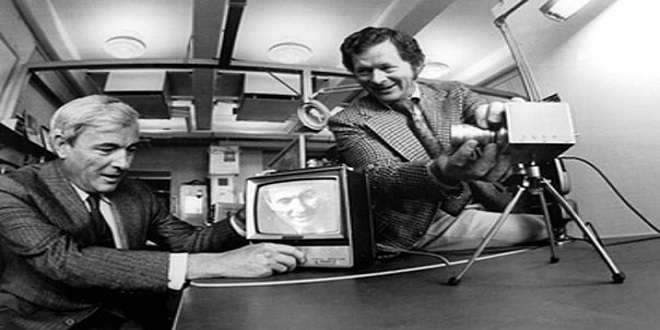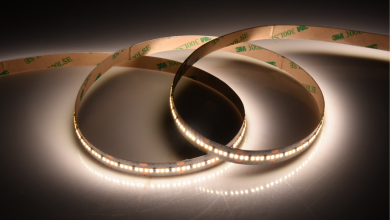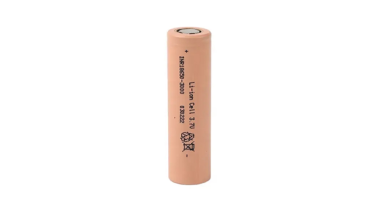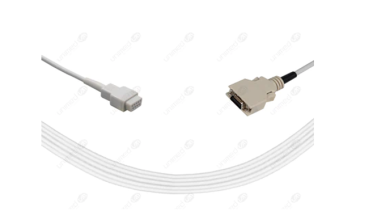The History Of CCTV

Closed Circuit TV is one the most important security innovations to have emerged in the middle of the 20 th century. This is a brief overview of some of the key stages in the creation of CCTV.
Destructive Beginnings
Closed Circuit TV was developed in Germany in the 1940s. Walter Bruch, an engineer who pioneered PAL color TV technology, was given the task of monitoring the launch of V2 rockets. These rockets were the first intercontinental ballistic missiles to be operational. They were intended to strike London and make it impossible for them to be intercepted. This was in the hopes of causing terror among the peoples of the allied countries. V2 rockets were made from incredibly volatile fuel mixtures. This led to many dangerous accidents at launch sites and production. Bruch’s CCTV system was designed to monitor these deadly terror weapons from a safe distance. The system was perfected by Bruch in 1942. It could not record film. A team of engineers had to monitor the rockets in real time from a bunker. The V2 did not have any significant impact on the strategic outcome of war. It ushered in a new age where ICBMs could be paired with nuclear warheads. Bruch’s Closed Circuit TV invention, though not a very significant legacy, would have an impact on war and destruction.
Commercial Emergence
After the Second World War ended, both government agencies and private companies scrambled for the technology that was developed in Nazi Germany. Many important outcomes were achieved by the scramble to obtain technological spoils from war. Technological war spoils greatly helped in the development of spacefaring rockets by the United States and Soviet Union. CCTV was also adopted by allies nations, serving more peaceful purposes that the original Bruch system.
A commercially viable CCTV system wasn’t available until 1949. This year, Vericon, a US company, released its first CCTV system. This commercially available CCTV system was not capable recording images, just like the previous one. This resulted in the development of complete monitoring solutions, often provided by third-party organisations.
Protecting The Royals
CCTV was first used as a civilian security tool during Queen Elizabeth II’s coronation in 1952. The organizers had to deal with security concerns at this event, which had a huge symbolic significance in the island nation. For live surveillance of the large crowds that gathered around Westminster, security personnel installed a comprehensive network of CCTV cameras. It is possible that the UK’s fascination for the technology may be due to the successful use of CCTV cameras at the coronation. With 5.2 million CCTV cameras operating across the country, the UK is one the most watched countries on Earth. This is equivalent to one camera per 13 people.
CCTV Returns to Home
Marie Van Brittan, a New Yorker and inventor, invented a home security system using CCTV technology in 1969. It was designed to be positioned on the porch of a house, allowing the occupants to see who is knocking at the door. This technology was adopted by hundreds of companies, who began to tailor their CCTV systems for small-scale home usage in the United States.
Significance
In the 1970s and 1980s, CCTV was widely adopted in retail environments. The first retail CCTV systems captured only black and white images. They were also capable of recording footage to tape. CCTV was a powerful tool in the prosecution of theft. The advent of CCTV recording capability has made it possible to dramatically change the law enforcement. To convict or exonerate suspects, CCTV evidence could be presented to court. Due to concerted government efforts to create new types of evidence for conviction, the use of CCTV cameras in courts dramatically increased in the United Kingdom during the 1990s.
The Digital Age
Many innovations have been made in CCTV since the advent of the digital age. Remote recording, internet connectivity and tiny cameras are all now common.
Drones
Drones are one of the most important innovations in the 21 st decade. Drones can be used for aerial photography, mapping buildings, and military purposes. In Ukraine, Iraq, Syria, and elsewhere, drones have been a key weapon of war. They can also be used as floating CCTV stations.
Many defense companies, which began their careers producing drones for military use, have now turned their attention towards the civilian market. Mobile CCTV units could soon be made from drones with powerful cameras that can last for long periods of time. Machine learning technology is used to identify individuals in the latest CCTV drones. Many people find the idea of a flying CCTV camera that can identify individual people frightening. This technology is expected to be used a lot in the near future.
Algorithm Monitoring
Monitoring CCTV feeds can be very time-consuming and important. Security personnel must keep an eye on CCTV screens to spot suspicious or unusual behavior. CCTV monitoring has changed over the past few years. Security companies have been developing algorithms to automate CCTV monitoring. A new generation of security monitoring software can detect anomalous visual data and report any unusual activity to human staff. The software makes use of machine learning algorithms to detect patterns in visual data. These software can help businesses save huge amounts of money that could otherwise have been spent on human monitoring 24 hours a day.
Algorithm-powered CCTV monitoring can’t replace the human operator. However, it can drastically reduce the workload of each professional monitoring.




